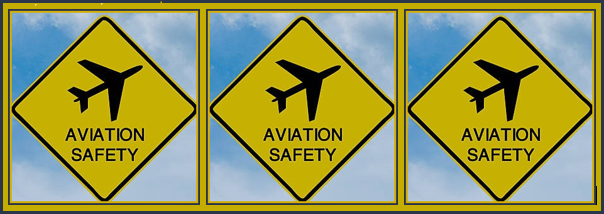FAA: punishing fraud v. SMS safety information?

The FAA has proposed, Federal Register published February 8, 2024, a sweeping amendment to 16 different FAR Parts, titled “Falsification, Reproduction, Alteration, Omission, or Incorrect Statements” (hereinafter FRAAOIC). The notice explains the intention of these change
“This proposal would (1) harmonize inconsistencies among the various falsification regulations and associated sanctions; (2) consolidate all existing falsification regulations into a general rule that standardizes the existing falsification regulations; and (3) ensure that falsification-related conduct not addressed by pertinent current regulations would be covered under the general rule.” {excerpted below.}
The timing of this NPRM seems oddly coincidental with the Department of Justice’s deliberations on United States v. The Boeing Company, Deferred Prosecution Agreement (DPA)
Court Docket No.: 4:21-CR-005-O (N.D. Texas) [ by failing to design, implement, and enforce a compliance and ethics program to prevent and detect violations of the U.S. fraud laws throughout its operations.]
What is glaringly omitted in the FAA’s publication is any reference to what has been described, globally, as the most important aviation safety program—SAFETY MANAGEMENT SYSTEMS– 14 CFR Part 5and associated regulations and multiple Advisory Circulars applying SMS to various segments PLUS its own Air Traffic Organization. Somewhere in 19 pages one would expect that some explanation of how this new rule will mesh with SMS.
No one disagrees with FRAAOIC’s proposed consolidation and explanation of rules applying to all but one of these defined fact cases:
(1) fraudulent or intentionally false statements or entries;
(2) any reproduction for fraudulent purpose;
(3) any alteration, including alterations for fraudulent purpose;
(4) knowingly concealing or causing to be concealed a material fact by omission;
(5) concealing or causing to be concealed a material fact;
(6) known omissions;
(7) misleading statements;
and
(8) INCORRECT STATEMENTS OR ENTRIES UPON WHICH THE FAA RELIED OR COULD HAVE RELIED.
No one disagrees that Numbers (1)-(7) should be subject to sanctions.
HOWEVER, SMS has made it clear that any unintentional error is protected under this program. This safety discipline recognizes that UNINTENTIONAL ERRORS do occur and serve best as learning experiences. Such reports of a mistake provide the certificate holder as well as ATO with information which facilitates preventative solutions. FRAAOIC includes such inadvertent actions within the parameters of this set of sanctions. The NPRM defines (clarifies?) what INCORRECT STATEMENTS means several times, and here is the most concise version of this guidance:
“INCORRECT STATEMENTS OR ENTRIES UPON WHICH THE FAA RELIED OR COULD HAVE RELIED.
A false statement is distinct from an intentionally false or fraudulent one. A FALSE STATEMENT or entry [1] is one that is INCORRECT. An INCORRECT STATEMENT or entry is made when a person UNKNOWINGLY provides false (i.e., incorrect) information upon which the agency relies. Incorrect statements or entries are prohibited by 14 CFR 60.33(c)(1)-(2) and 67.403. In contrast, an intentional false statement is comprised of three elements: a (1) false statement, (2) in reference to a material fact,[2] (3) that is made with knowledge of its falsity.[3] A fraudulent statement or entry consists of the preceding three elements plus two additional elements: (1) an intent to deceive and (2) with action taken in reliance upon the representation.[4]”
A hypothetical will demonstrate the quandary that FRAAOIC imposes on the average aviation employee :
- The company has recently emphasized the safety importance of reporting inadvertent mistakes. This renewal of commitment was necessitated after a history of allegations of management punishment of all errors made by the employees, The company’s efforts to reinvigorate its SAFETY CULTURE is accepted as an honest effort to REESTABLISH/ ESTABLISH TRUST.
- To give greater credibility, the company fired its old ACCOUNTABLE EXECUTIVE, who was never seen on the floor, with a new guy who has worked his way up from jobs that use wrenches to a management position.
- The woman in the below image, hypothetically, has just figured out that she missed steps in the sequence for installing parts. She WANTS TO SUBMIT THIS DISCOVERY THROUGH SMS. She believes in the new AE. The AMT writes in up and files a report with suggestions of how repeats of his sequence can be avoided. He responds quickly because the shop floor is a busy place.
- At lunch the shop steward asks her what was in the SMS report box. The knowledgeable’ union representative then hands the AMT a copy of the FRAAOIC.
- Our hypothetical worker, having been mystified by the INCORRECT STATEMENT means, is terrified that she may be punished. She wonders if she should pull back his SMS report,

This concern has been well articulated by comments submitted by A4A and by AIA/ARSA/AEA/CAA/NACA. It would appear as though a minor deletion of the 8th category under the FRAAOIC would punish the actions that harm aviation safety and maintain the value of SMS.
An individual, who wants to contribute to aviation safety through a proven program, now must sort through compound, complex sentences with dependent clauses to discern whether an unintentional error will be punished. BAD for SMS and safety



John C. Stuart, Jr., Senior Attorney, Aviation Litigation Division, AGC-300, Federal Aviation Administration, Office of the Chief Counsel, 800 Independence Avenue SW, Washington, DC 20591; telephone (202) 267-9958; email mike.stuart@faa.gov.
I. Executive Summary
A. Overview of Proposed Rule
“The FAA and other relevant stakeholders rely on complete and accurate information in safety-related records. Indeed, the FAA and regulated persons make critical safety-related decisions based on the information, such as in FAA-required records, and necessarily rely on the veracity of that information. When a person provides falsified information or omits material information from records, that person creates a threat to aviation safety by inhibiting the ability of the FAA and other stakeholders to make critical safety-related decisions. Falsification regulations promote the integrity of information necessary to ensure aviation safety. They also serve as a basis for appropriate action when a person engages in falsification-related conduct.”
“The proposed rule would affect applicable parts in 14 CFR chapters I and III. Falsification prohibitions are currently found in 14 CFR chapter I, parts 3, 21, 43, 60, 61, 63, 65, 67, 89, 107, 111, 120, 121, 139, 142, and 145. The FAA proposes to remove the existing falsification regulations from parts 21, 43, 60, 61, 63, 65, 67, 89, 107, 111, 120, 121, 139, 142, and 145, and consolidate them in a new subpart in part 3. The proposed rule in part 3 would also apply to those parts of 14 CFR chapter I that do not currently have falsification regulations but for which such regulations are clearly warranted, as explained in the “Discussion of the Proposal Section” in this NPRM. Those parts are 5, 23, 25, 26, 27, 29, 31, 33, 34, 35, 36, 45, 47, 48, 49, 68, 77, 91, 93, 99, 101, 103, 105, 117, 119, 125, 129, 133, 135, 136, 137, 141, 147, and 183. As a result, the proposed rule in part 3 would create standardized falsification proscriptions and apply them to 14 CFR parts 5, 21, 23, 25, 26, 27, 29, 31, 33, 34, 35, 36, 43, 45, 47, 48, 49, 60, 61, 63, 65, 67, 68, 77, 89, 91, 93, 99, 101, 103, 105, 107, 111, 117, 119, 120, 121, 125, 129, 133, 135, 136, 137, 139, 141, 142, 145, 147, and 183.”
“The proposed rules in part 3 and part 402 would proscribe: (1) intentionally false or fraudulent statements; (2) productions, reproductions, or alterations for fraudulent purpose; (3) knowingly omitting or causing to be omitted a material fact; and (4) incorrect statement.
B. Background
1. Definition of “falsification regulations” and Current Locations in 14 CFR
The term “falsification regulations” as used in this NPRM generically refers to a variety of provisions in 14 CFR parts 1-199 implemented over decades that variously prohibit the following: (1) fraudulent or intentionally false statements or entries; (2) any reproduction for fraudulent purpose; (3) any alteration, including alterations for fraudulent purpose; (4) knowingly concealing or causing to be concealed a material fact by omission; (5) concealing or causing to be concealed a material fact; (6) known omissions; (7) misleading statements; and (8) INCORRECT STATEMENTS OR ENTRIES UPON WHICH THE FAA RELIED OR COULD HAVE RELIED.
A false statement is distinct from an intentionally false or fraudulent one. A FALSE STATEMENT or entry [1] is one that is INCORRECT. An INCORRECT STATEMENT or entry is made when a person UNKNOWINGLY provides false ( i.e., incorrect) information upon which the agency relies. Incorrect statements or entries are prohibited by 14 CFR 60.33(c)(1)-(2) and 67.403. In contrast, an intentional false statement is comprised of three elements: a (1) false statement, (2) in reference to a material fact,[2] (3) that is made with knowledge of its falsity.[3] A fraudulent statement or entry consists of the preceding three elements plus two additional elements: (1) an intent to deceive and (2) with action taken in reliance upon the representation.[4]
